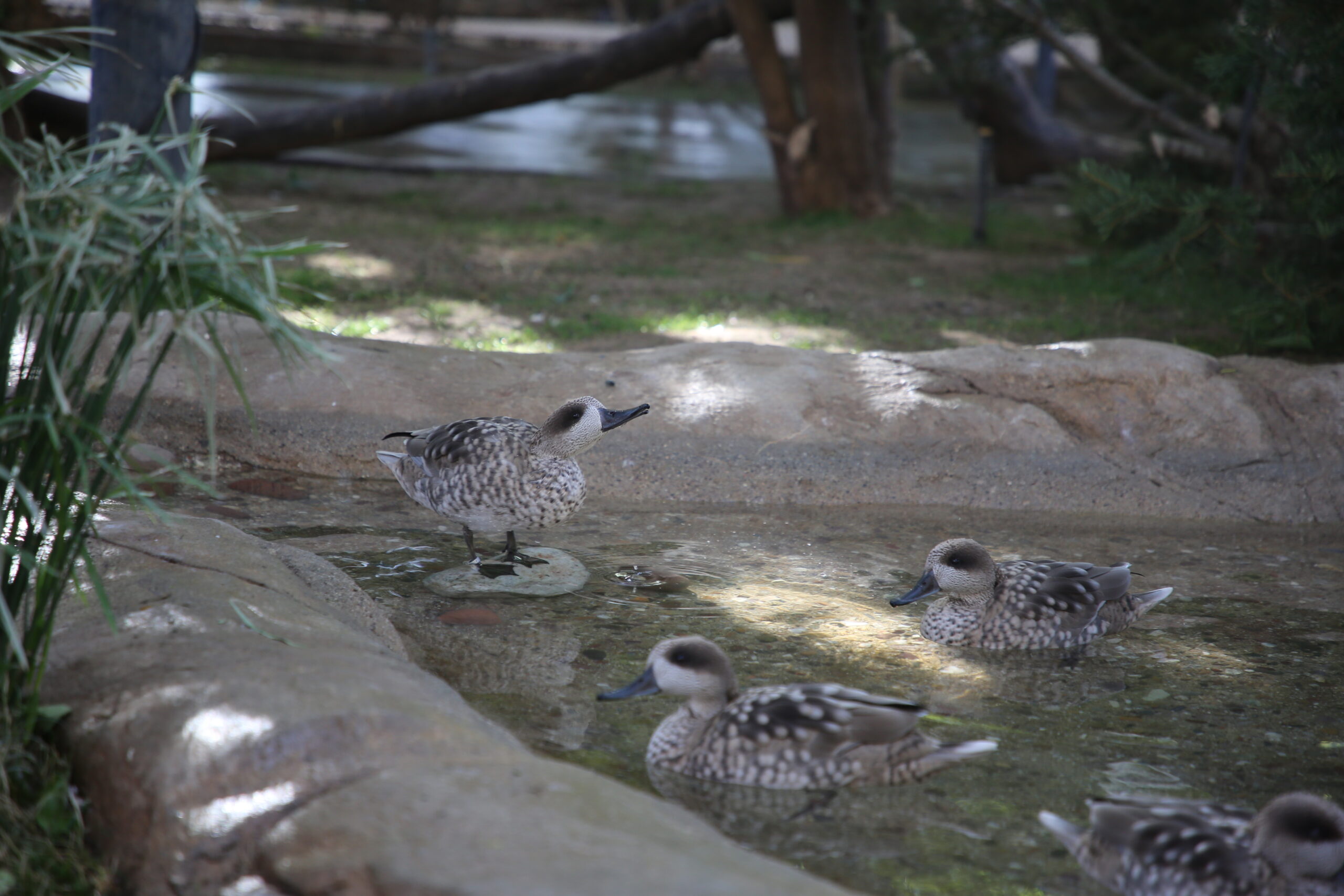Summary of Helping Species Thrive: a Tale of the Marble Teal:
The Reid Park Zoo supports the Marble Teal population through cooperation with the Species Survival Plan (SSP). The zoo houses a bachelor group of Marble Teals and has arranged for some birds to be sent to Tracy Aviary for breeding while receiving previously bred teals in return. This practice, aimed at maintaining a strong and diverse gene pool, involves carefully vetted swaps to ensure the health and well-being of the birds during transit. Upon arrival, new birds are quarantined and monitored before being introduced to their new environment. This process highlights the collaborative efforts among AZA Zoos to ensure the sustainability and growth of species like the Marble Teal.
– The strategic role of Species Survival Plans (SSP) in maintaining genetic diversity and health in zoo populations
– The complexities and considerations involved in the transportation and acclimatization of animals between zoos
– The critical contribution of zoo-based breeding programs to the conservation of endangered species, exemplified by the Marble Teal
– The impact of collaborative efforts among zoos on global conservation initiatives
– Practical aspects of zoo animal management, with a focus on health monitoring and habitat optimization
Species Survival Plans (SSP) play a pivotal role in proactively managing captive animal populations, particularly those endangered or threatened in the wild. The SSP’s purpose is manifold, encompassing the maintenance of genetically diverse and demographically stable populations while ensuring that these animals’ living conditions promote physical and psychological well-being. An excellent illustrative example of this process in action is the management and breeding program for the Marble Teal, a waterfowl species facing various environmental threats in its natural habitats.
The Marble Teal, with its distinctive plumage and relatively small global population, represents a significant focus for conservation efforts. Zoos, such as Reid Park Zoo, participate in meticulously planned exchanges of these birds to prevent inbreeding and to bolster genetic diversity, a critical aspect of healthy animal populations. These transfers require a highly coordinated approach, starting with thorough veterinary exams to confirm the birds’ health. The logistics of moving the animals are no less complex, involving careful crating, providing food and water, and securing transport arrangements to their new locations. Upon arrival, a stringent quarantine period follows, allowing the receiving institutions and the transferred teals to adjust before integrating into new social and physical environments.
The transportation and acclimatization phase underscores the multifaceted considerations involved in zoo-based species management. Each step, from health screenings to the final introduction into a new habitat, is conducted with precision and care to minimize animal stress and ensure a smooth transition. This process benefits the individual birds and contributes to the overall health and viability of the species in human care.
Breeding programs, bolstered by the SSP’s directives, serve as critical lifelines for many species, with efforts often extending beyond the confines of zoo borders to encompass wider conservation initiatives. The Marble Teal’s breeding program exemplifies the proactive measures to safeguard species against habitat loss, climate change, and other anthropogenic pressures. These programs contribute significantly to the species’ long-term survival and resilience by fostering genetically diverse populations through strategic pairings.
Collaborative efforts among zoos worldwide enhance the impact of conservation endeavors, demonstrating the power of collective action in addressing biodiversity loss. These partnerships extend the reach of conservation work, facilitating knowledge exchange, resource sharing, and unified strategies to tackle pressing environmental challenges. The management and conservation of the Marble Teal within zoo communities highlight the importance of coordinated, global responses to biodiversity conservation.
Beyond the strategic breeding and exchange programs lies the day-to-day management of zoo animals, encompassing health monitoring, diet, and habitat design to replicate natural environments as closely as possible. This aspect of zoo management ensures that each animal, including the Marble Teal, receives tailored care that addresses its specific needs and natural behaviors, promoting a high quality of life within the zoo.
Through the lens of the Marble Teal’s conservation and management, the article sheds light on the broader implications and methodologies of zoo-based wildlife conservation. These efforts reflect a commitment not only to the preservation of individual species but also to the broader ecological balance and the health of our planet. The initiatives undertaken for the Marble Teal exemplify the meticulous planning, collaboration, and dedication required to contribute to global conservation goals. Engaging in this way highlights the essential role zoos play in the fight against biodiversity loss, offering hope and tangible solutions for the future of many species.

